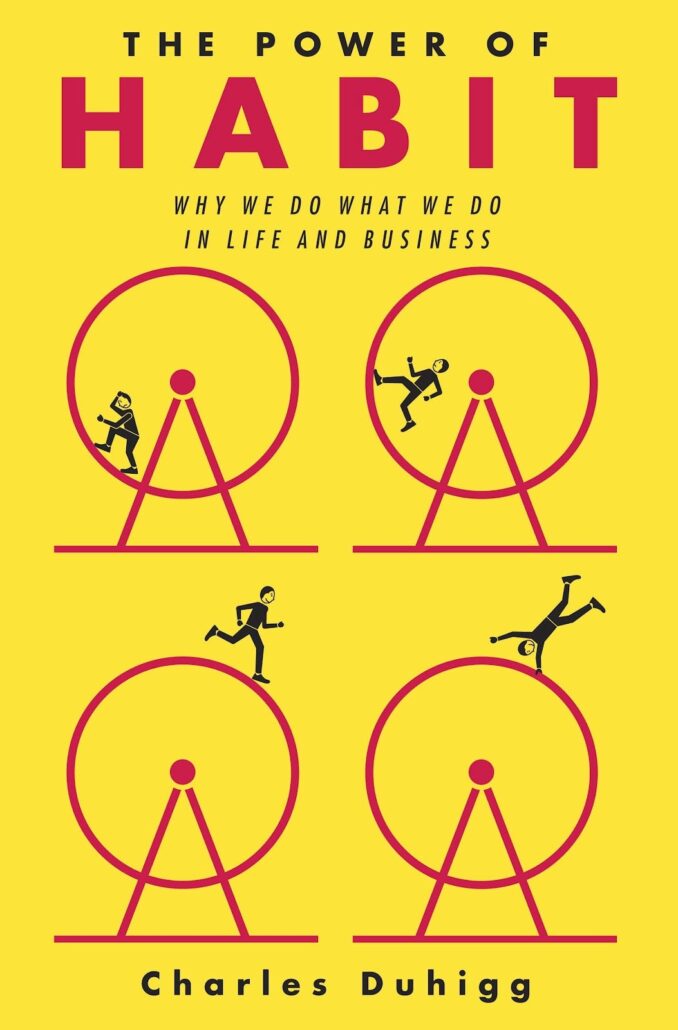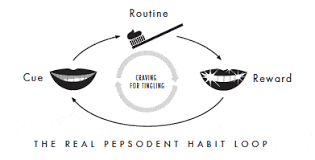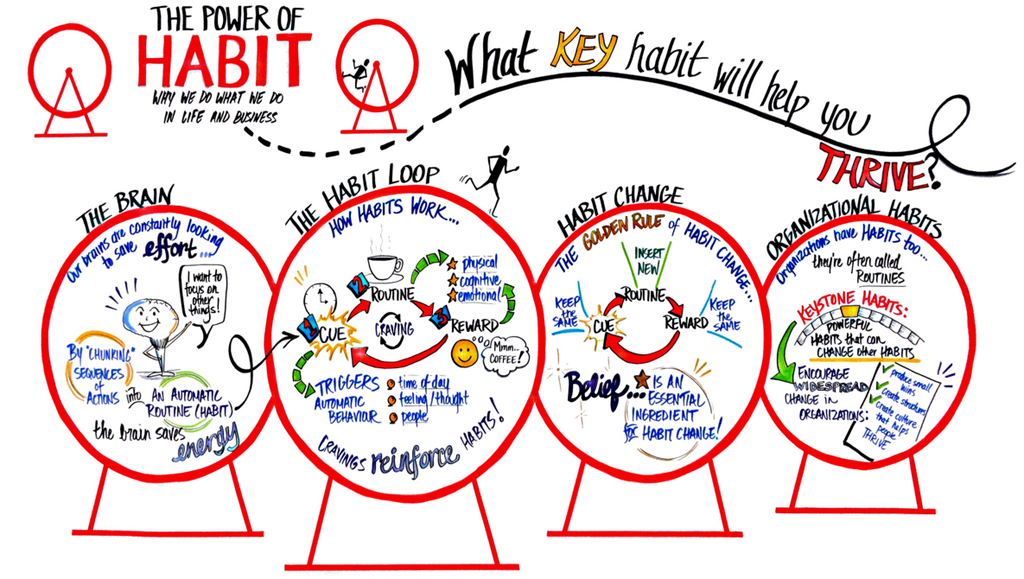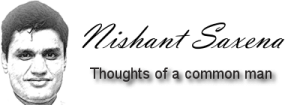Author: Charles Duhigg
Genre: Self- help, Non – fiction

Charles Duhigg, a New York Times reporter, published The Power of Habit in 2012. The book explores the science behind habit making and reformation. When Charles was a reporter in Iraq, it suddenly dawned on him that U.S. Military is one of the biggest habit – formation organizations, where the entire organization depended on endless routines to get the soldiers to perform without wasting time. During crisis, loss of seconds equaled loss of life.
We all are slaves to our habits,which either make us or break us. More than 40 percent of actions people perform each day aren’t actually decisions, but habits. Only in the past two decades have researchers and marketers really begun understanding how habits work and more importantly, how they change.
This book is divided into three parts:
Part One: The Habits of Individuals
- Habits, Scientist say, emerge because the brain is constantly looking for ways to save efforts. When habit loop emerges, the brain stops fully participating in decision making.
- How does the habit loop emerge? First, there is a cue – a trigger that tells your brain to go into automatic mode and which habit to use. Second, there is a routine – which can be physical or mental or emotional. Third, there is a reward – which helps the brain to decide that if this particular loop is worth remembering or not.
- At the time of WW1, the oral hygiene of the Americans was at steep decline, still no one was ready to buy a toothpaste. A prominent American executive Claude C. Hopkins turned the Pepsodent brand into one of the best-known products. This happened because he found a cue and reward (scintillating smile) that fueled the daily toothbrushing as a habit.

- P&G’s Febreze was an advanced, colorless, odorless liquid that could end any foul odor. Despite successful test market results, sales were bad until their market researchers stumbled upon the glitch which led them to create a habit loop: a sense of craving – the desire to make everything smell as nice as it looked which made Febreze an instant hit.

- THE GOLDEN RULE OF HABIT CHANGE: You can’t Extinguish a bad habit, you can only change it.
- Genuine change requires work and self – understanding of the craving driving behaviors. Changing any habit requires determination. Most of the time, those changes are accomplished because people examine the cues, cravings, and rewards that drive their behaviors and then find ways to replace their self-destructive routines with healthier alternatives.
Part 2: The habits of successful organizations
- Alcoa CEO believed in identifying and correcting a ‘keystone’ habit. “Some habits have the power to start chain reaction, changing other habits as they move through the organization, some habits matter more than others in making businesses and lives. These are ‘Keystone Habits’, and they influence how people work, eat, play, live, spend, and communicate. Keystone habits start a process that, over time, transforms everything.” Alcoa prioritized safety of its workers. O’Neill constituted a routine: Anytime someone was injured, unit president had to report it to O’Neill within twenty-four hours and present a plan for making sure the injury never happened again. The reward being that only people who embraced the system got promoted. Due to the new routine costs came down, quality went up, and productivity skyrocketed.
- Identifying keystone habits is tricky. Detecting keystone habits means searching out certain characteristics, known in academic literature as ‘small wins.’ They help other habits to flourish by creating new structures, and they establish cultures where change becomes contagious.
- In Beijing Olympics, Michael Phelp’s won eight gold medals. In one of his most important races, he got water in his eye goggles, despite of which he not only won the gold medal but set a new world record. Bob Bowman, Phelp’s coach had got Phelp’s a videotape, a mental visualization of the perfect race, which was printed in Phelp’s mind. This helped shape the intuition in Phelp’s mind and guided him through the obstacles, unharmed and a winner.
- In 1992, an experiment was conducted by psychologists on newly operated orthopedic patients. All these patients were elderlies and were recommended by doctors to exercise daily in order to recover from their surgeries, which was a very painful task. Psychologist provided all of them with a booklet, detailing their rehab schedule, with blank pages in the back, where they were asked to write their daily goals. After three months it was discovered that patients who had written their plans had recovered at twice of a speed than those patients who had written nothing at all. Insight being that the patients already knew their inflection points when they wrote their goals of the day. They also knew when will their temptation to quit would be the strongest, helping them to mentally prepare for the obstacle in advance.
- When people are asked to do something that takes self-control, if they think they are doing it for personal reasons – if they feel it’s their choice or something they enjoy because it helps someone else – its much less taxing. If they feel like they have no autonomy, if they’re just following orders, their willpower muscles get tired much faster.

Part 3: The Habits of Societies
- A movement endures because the leader gives participants new habits that create a fresh sense of identity and feeling of ownership.
- The habits of peer pressure spread through ties and gain authority through communal expectations. The combination of strong and weak ties is what propels a movement forward.
- Movements don’t emerge because everyone suddenly decides to face that same direction at once. They rely on social patterns that begin as the habits of friendship grow through the habits of communities, and are sustained by new habits that change participations’ sense of self.
Why should you read this book: Habits are first cobwebs, then cables. – Napoleon Hill
People like you and me look for secret formulas for quickly changing any habit. It’s just that these formulas don’t exist. This book provides us with a structure to understand how habits work and how they might change. Change might not be fast and it isn’t always easy. But with time and effort, almost any habit can be changed.
Goodreads Link: The Power of Habit: Why We Do What We Do in Life and Business by Charles Duhigg | Goodreads

 This information will never be shared with third party
This information will never be shared with third party
Great
I appreciate your insight…keep it up
Amazing article 👍
Beautifully explained 😍